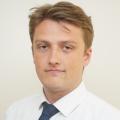TWO British companies have collaborated to create an instant triage system for casualties on battlefields or in disaster zones.
Poole-headquartered cyber-security company C3IA Solutions and Birmingham-based telemedicine pioneers Black Space Technology already provide the life-saving tech across the world.
The system allows the transmission of health and medical information immediately from a casualty to experts who can give instant advice.
The first hour after an injury is called the ‘golden hour’ and 80 per cent of deaths occur in this period, so speed of diagnosis, treatment and care is vital.
Sensors placed on the patient mean information is transmitted constantly so any changes will be noticed and the right advice can be given.
Other information and pictures can also be sent and the radios allow video calls so those on the ground can speak with medical professionals about the situation.
Ash Williams from C3IA Solutions said: “This collaboration is about saving lives. The Silvus radios are the best there are and enable communications in places where there is no other way of keeping in touch.
“They are robust and powerful and create their own network on the ground. They also enable Black Space Technology’s software to be used to send and receive vital information.
“Already the interest from military, rescue and other services from around the world is strong.”
David Morgan, a former NHS consultant surgeon and Royal Marines reserve medical officer for eight years, is the CEO and medical director of Black Space Technology.
He said: “We provide point-of-injury monitoring solutions for battlefield and other remote or contested environments.
“Our software captures incremental data throughout any evacuation pathway which improves combat casualty care.
“The first hour after injury is called the golden hour and there is also the initial ‘platinum 10 minutes’.
“Speed of reaction and care therefore is absolutely crucial and through the Silvus radios and utilising Bluetooth and other technology our software can make all the difference.
“Sensors placed on the patient send a constant stream of data which are monitored by medical professionals either nearby in a command centre or further afield.
“Those on the ground can add extra data and receive instructions about what to do.
“Real-time video conferencing is also possible meaning decisions taken are more likely to be the best ones.
“It is of use to the military but also to NGOs in disaster zones – or wherever there are casualties.
“Our aim is to close the care gap and with C3IA Solutions we have a collaboration that will save lives.”






Comments: Our rules
We want our comments to be a lively and valuable part of our community - a place where readers can debate and engage with the most important local issues. The ability to comment on our stories is a privilege, not a right, however, and that privilege may be withdrawn if it is abused or misused.
Please report any comments that break our rules.
Read the rules here